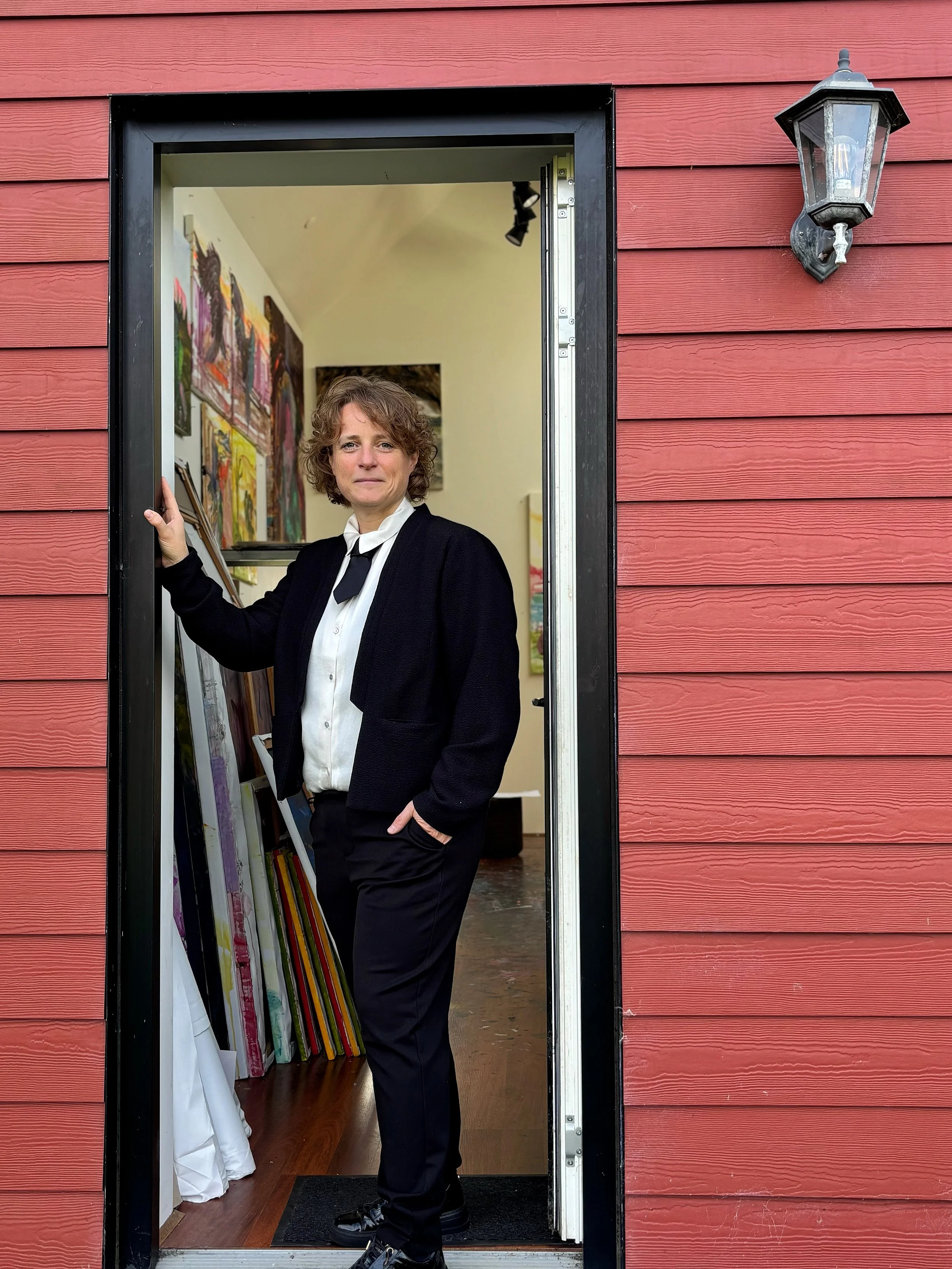Expressionist soul. Action-driven mind. Buddhist heart. Queer. Bold. And unapologetically funny.
As an internationally recognized visual artist, curator, and acclaimed advisor and moderator, Hellstern works at the intersection of identity, climate, and emotional storytelling, drawing on her lifelong passion for Painting & Performance through Expressionism, Action Painting, and Buddhist Philosophy. Her creative universe is vibrant, physical, spiritual - and deeply personal.
Hellstern’s work is also driven by a powerful inner fire:
a desire to change the world into something more inclusive, more generous - better than what she experienced growing up as a queer person who wasn’t fully seen or embraced.
Through her art and leadership, she creates the kind of community and visibility she once longed for - building spaces where difference is celebrated, and every voice has value.
As a graduate of Funen Art Academy, Hellstern has earned wide acclaim, including 1 Prize at the VKunst International Art Award in Frankfurt, and honors at the Outstanding work at Baltic Pride in Tallinn. She was also the only selected Danish artist for the Nasty Women movement, uprise and exhibition in New York.
Her works are held in respected worldwide collections, and she is often sought out to advise other artists, moderate inspirational dialogues, and curate powerful narratives that bridge art and activism.
Henriette is known not only for her fierce intellect and artistic force, but also for her subtle humor, heartfelt presence, and ability to build real, lasting connection.
Text by artSIStra
Photo by L.H.
Contact Henriette Hellstern for more info.

